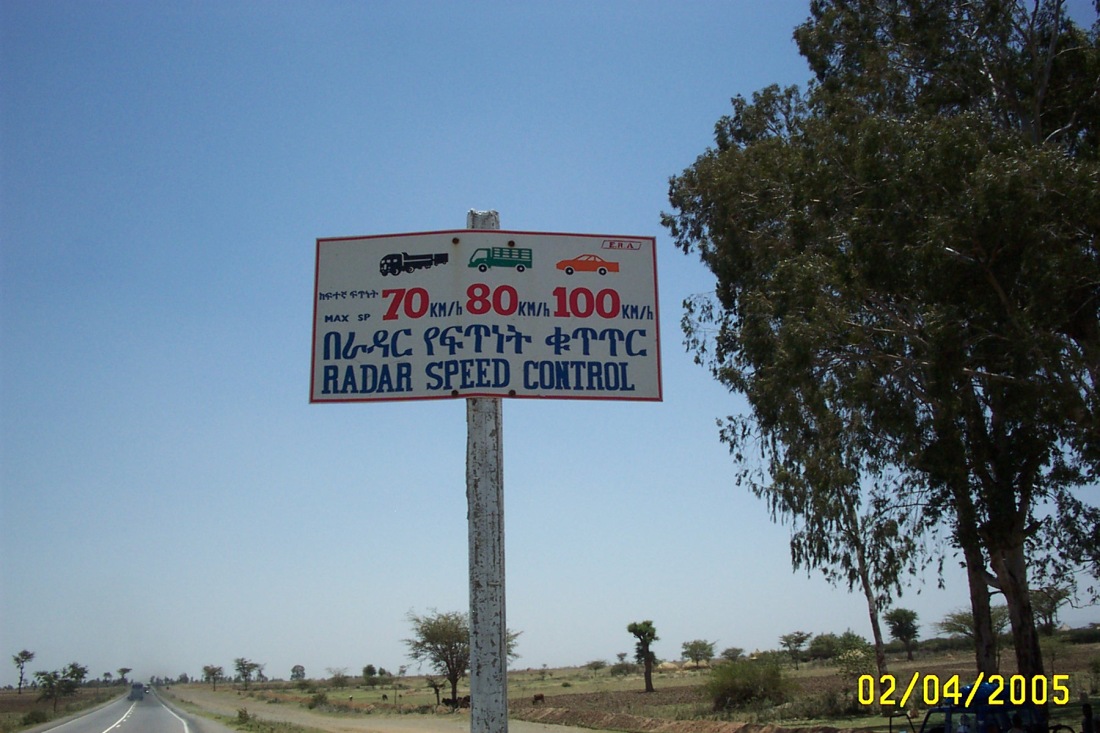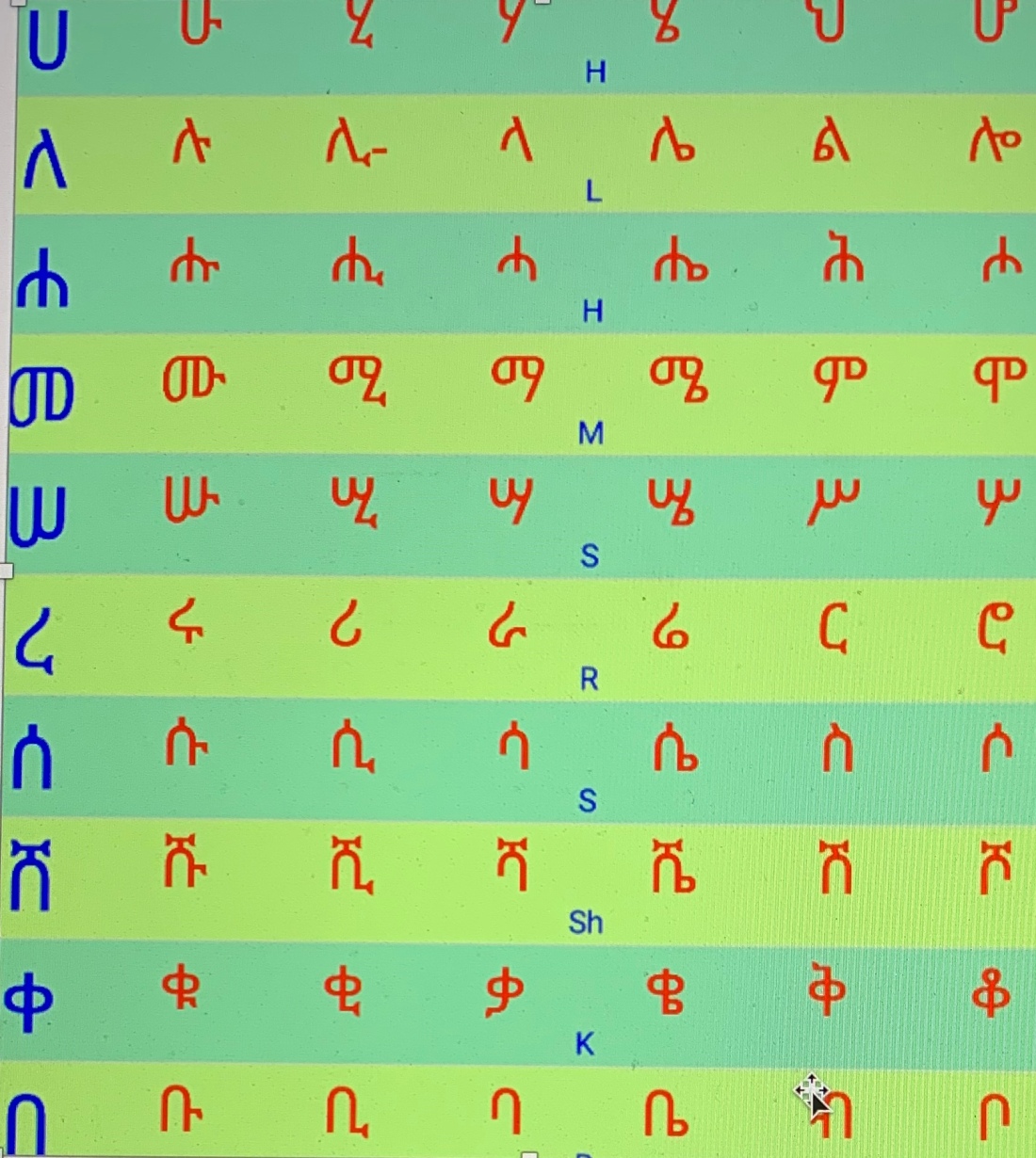Amharic is the language of the Amharas, one of the major tribes of Ethiopia. Emperor Haile Selassie (The power of the Trinity) was an Amhara and sought to make it and English the main languages of Ethiopia. French was, for a while, a popular alternative and a number of words in modern Amharic also come from the Italian invasion. There are apparently 83 languages in Ethiopia giving rise to about 200 dialects. Ge’ez is the old language of the Orthodox Church and introduces the ‘ in the middle of a word to indicate a glottal stop.
To show how different these tribal languages are I will give four greetings with a rough English translation. I will use our script to give an idea of how they sound
- Amharic greeting is classically Tenastilygn – a shortened form of the sentence Igzeehabeeyer Tena Yisterlygn – May God give you health for me.
- In Oromifa – Neggaa, Fiya, Errga – Hello, how are you, it’s nice to smell you. In this situation I think the ‘smell’ is conceptually ‘to have your presence with us’.
- In Wolaitata – Sero Lo’oo Lo’oo Fiedaitey – Hello, How are you., nice to see you.
- In Hadeyan – Tuuma, Tuuma. Hello, hello!
Haile Selassie attempted to make Amharic the common Ethiopian language and it was taught in primary and secondary school with English being added later in primary school. English was the official language of tertiary education. After Haile Selassie was murdered the era of Mengistu HaileMariam (The kingdom of the power of Mary) sought to elevate other tribal languages with English as the second language, leaving Amharic for the Amhara tribe. It is thought by many that, whereas Haile Selassie was seeking to unite the country, Mengistu was seeking to divide the tribes to make the country easier to rule.

Certainly when I went back after the overthrow of Mengistu I experienced some trouble from this. I was living in the Wolaita area and patients coming from the Hadeyan area only 40 km down the road could frequently not be understood by the staff. The present government seems to now have a three language policy.

In Amharic there are two ‘t’s – both normal for them but with very different meanings. Also with ‘k’s and ‘ch’s differences which we describe as soft or explosive. You can get into real trouble. I was in the bank with a couple of friends and our business was drawn out. I said to my friends ‘Chiger alle?’ thinking I was saying ‘is there a problem?’ but actually saying ‘do you have pubic hair?’ Embarrassing for them and for me, when it was explained. But their letters are written differently and so easily read but not easily heard by us, who think anything like a ‘t’ sound is in fact a ‘t’. In Amharic ‘sebake’ and ‘sebake’, depending on how you sound the ‘k’ means a ‘preacher’ or ‘a bearer of false tales’.
In English we have many letters and letter groups with same or different meaning. We spell Monday with an ‘o’ and say it with a ‘u’. We have the ‘ou’ and say it differently in the following – cough, mouse, tough, through – and pronounce it differently in each word. We have the one letter eg ‘t’ and pronounce it differently in different words. The ‘t’ in tough and the ‘t’ in take are made with the tongue in very different places. Or more significantly the ‘c’ in cat and centipede. Say them and see how your tongue is in a different position for each. We have f’s and ph’s which sound the same. In some of the languages you don’t differentiate p’s and f’s, so people, when they speak in English go to fray or pray at church; they wear certain clothes either because it is the new fashion or new pashion, without recognising the difference. In Amharic if you know the syllabet you can read it with the correct sound even if you maybe cannot understand it!

I once told a patient that, as I had spent hours fixing the problems which his venereal disease had caused, ‘that if you have sex with anyone apart from my wife after this, I will kill you!’ I used the sound for my instead of the one for your. Fortunately he spoke in Oromifa and after my Amharic speaking fellow workers got up from the floor, having ceased rolling around in laughter, they translated what I had meant to say!
Learning another language is always a challenge and we all make mistakes!
Dominic Cartier
Oh my goodness. What a lot of fun. Even here I know of plenty of times when students mispronounced words they claimed they had an impediment and they couldn’t change then I’d simply explain where the tongue should be and suddenly their ‘muvver’ would become their ‘mother’ very often with great delight. An interesting post Dominic
LikeLiked by 1 person
You’re more a language man than I am, but it is interesting to fall over your tongue!
LikeLiked by 1 person
A most interesting post.
LikeLike
Thankk you.
LikeLike
I found this so interesting. I never knew English words were pronounced differently.
LikeLike
They say that English is one of the hardest languages to learn. I found it easy. Managed it as an infant! Others I don’t find so easy!
LikeLike